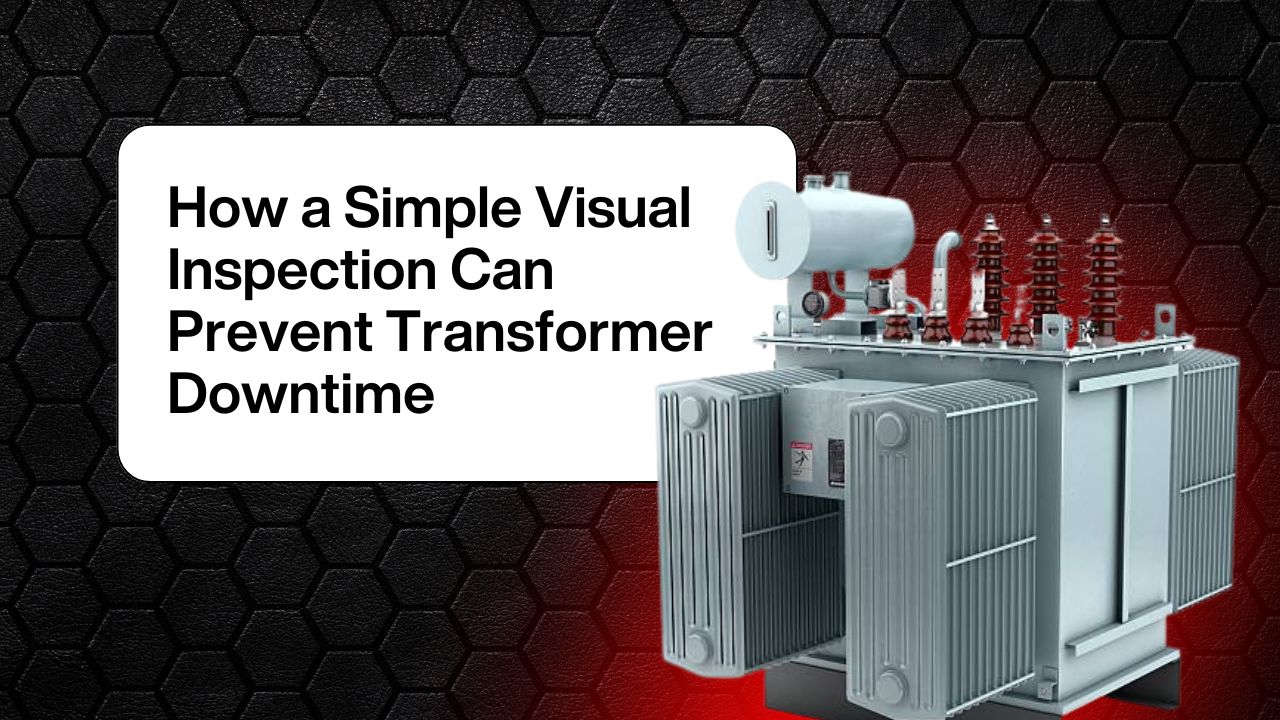

Many transformer faults start long before the alarms go off. The clues show up on the outside—quiet, gradual, and often missed.
You may walk past one every day without realizing the unit is under stress.
That’s where a trained eye makes a difference.
Visual inspections help you spot early wear that doesn’t yet trip a sensor but still holds the power to interrupt operations.
Here’s how and where those surface-level details matter most.
When oil escapes, it alters both cooling and insulation properties inside the tank. But before fluid levels drop significantly, the leak leaves subtle patterns,like thin brown films, trails running down from gaskets, or darker corners around flanges.
These aren’t just cosmetic. They point to pressure imbalance, aging seals, or improper torque on bolted joints.
Catching these marks early can help crews re-seal before oxidation accelerates or dielectric strength drops. It’s cheaper than flushing and faster than an emergency top-up.
It’s easy to ignore a bolt that has backed out slightly or a nameplate faded by sunlight. But those are often signs that the unit hasn’t been touched or reviewed in a while.
Labels that peel off or switches without covers reflect missed maintenance touches.
These details suggest the kind of surface neglect that often goes hand-in-hand with hidden internal decline, something a reputed transformer manufacturing company would always emphasize addressing through regular inspections.
Documenting these details during routine inspection helps create a full picture of what the unit has been through.
Most transformers deal with daily micro-movements from magnetic forces, switching surges, and thermal expansion.
Over time, these create outward symptoms, including sheared paint around clamps, slight misalignment in support brackets, or uneven bolt pressure along the base.
These don’t trigger noise or alarms but act as early signals of stress redistribution inside. If left unchecked, they evolve into core vibration or insulation rub.
A good visual sweep helps you tighten the mechanical skeleton before it loosens more.
High-voltage bushings can degrade from both inside and outside. The surface tells you which.
Powdery chalk suggests long-term UV exposure or pollution buildup. Moisture leaves a foggy haze or causes oil seepage at the base. Cracks or tracking marks hint at discharge activity, especially under humid conditions.
These small visual cues, if addressed early, help prevent arc-over or sudden dielectric failure. They also inform whether to test capacitance values or consider replacement before the unit sees another summer.
Many cooling failures don’t begin with component faults. They start with clogged paths.
Insects nest under louvers. Fins collect grime near ground level. Even weeds growing too close to radiator banks disrupt ambient air circulation.
Over time, this builds a heat trap that can push oil temperature higher, even with fans running normally.
A flashlight and a few extra minutes during your walkaround can flag these small changes. Left alone, they raise thermal strain across the windings and tank.
We’ve learned that a transformer can signal its own decline without raising a single alarm—if you know what to look for. That’s why our teams never treat visual inspection as just a formality.
Whether we’re delivering a fresh build or stepping in for a service, we treat surface clues as part of the diagnostic chain.
Our refurb and field testing services often begin with these small checks. Because in high-load environments, downtime rarely starts big. It starts quiet, and early.
Get in touch with Makpower today to learn more.